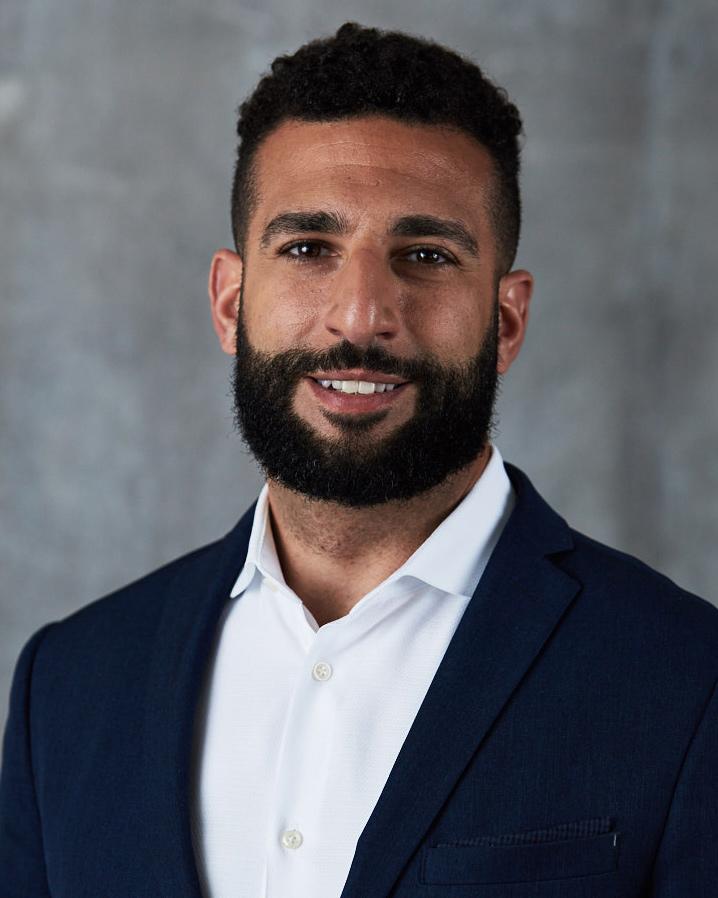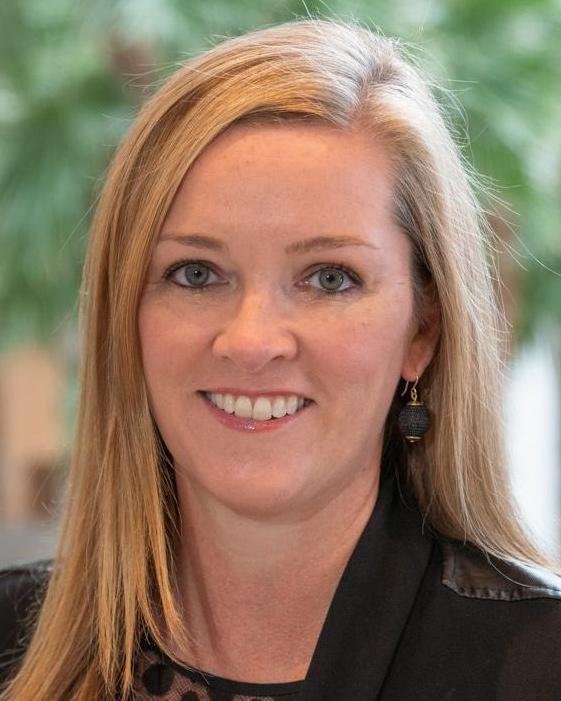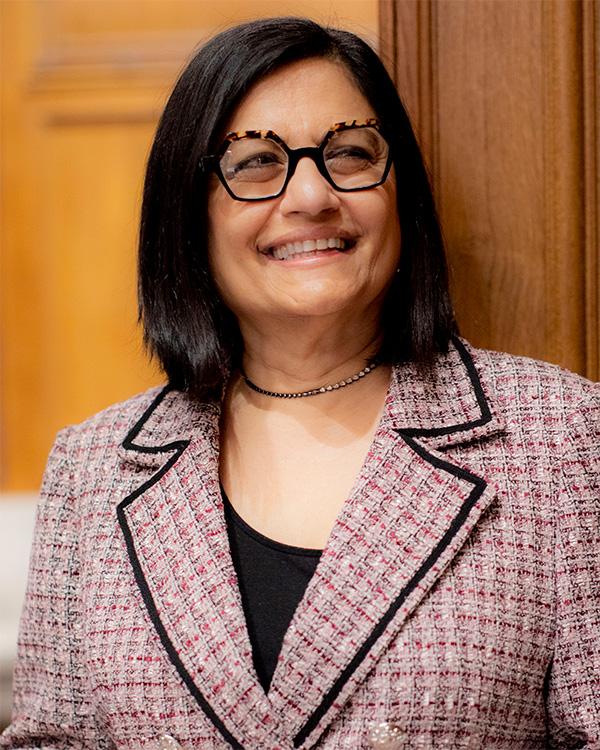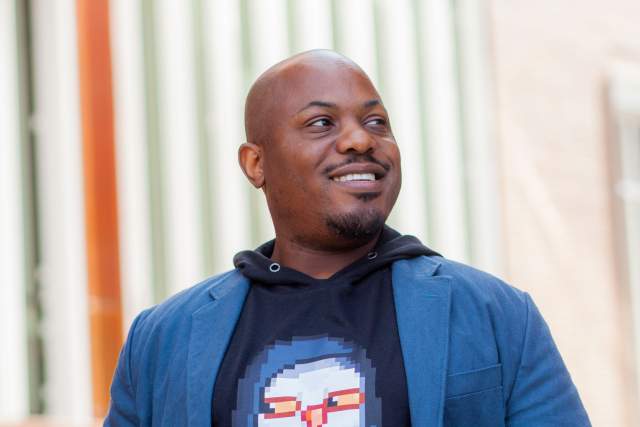The New Marketing, According to Tuck Faculty and Alumni
Today’s advertising landscape isn’t one that Don Draper would recognize. Tuck marketing faculty and alumni brand leaders weigh in on what’s changed—and what shouldn’t.

From top left: Heather Cole T’03, Professor Kusum Ailawadi, Ahmed Darwish T’14, Karilyn Anderson T’14, Professor Punam Anand Keller, Eric Markus T’12, Federico Queirolo T’14, Tara Pyle T’12, Felipe Burgaz T’91, Grace Chan Markus T’12, Professor Kevin Lane Keller, Professor Scott Neslin, Jill Nelson T’16, Kate Jhaveri T’03, Kenny Mitchell T’04, Federico Troiani T’04.
Marketing today looks nothing like it did in the 1960s, the start of “The Golden Age of Advertising,” when television gave brands new opportunities to connect with audiences.
Technology has transformed the space, whether that’s machine learning algorithms that can pick the perfect image or curated social media accounts that can attract followers. New ways of collecting and using consumers’ data has marketing executives taking out some of the guesswork. Artificial intelligence and ChatGPT are presenting companies with opportunities to do more—faster—while creating more personalized and interactive content.
Just a few years ago, the arrival of COVID-19 accelerated e-commerce, but now, consumers are returning to stores. What are the most effective ways for companies to communicate online and in person? How can direct-to-consumer companies sell their products without offending their retail partners? Why is it essential that marketing executives prove that their ad campaigns are effective?
To answer these questions, we present the Future of Marketing from the perspectives of Tuck faculty and alumni who work in the field across retail, media, and finance. Faculty members tap into their expertise to share practical perspectives on how brands can stay both timely and timeless. They discuss the best ways to navigate the opportunities and challenges of multichannel distribution, measure the incrementality of your marketing, and foster employee engagement with social marketing.
Meanwhile, our alumni are at the forefront of the field. They discuss how omnichannel marketing is being used in sports, share solid social media strategies, and offer specific use-cases on ChatGPT and generative AI. No matter the industry, however, personalization, transparency, and storytelling remain essential. Thanks to Tuck’s general management curriculum and courses in communications and marketing, our alumni have been able to demonstrate that their marketing investments can drive sales and that their omnichannel distribution strategies can thrive even in today’s complicated media landscape. Read on to learn more about what&’s new in marketing, and what shouldn’t change.

Focus on Your Hero Products
Grace Chan Markus T’12
Senior Director of Go-to-Market Strategy and Brand Activation, EMEA Region, Tommy Hilfiger
“The bottom line is that consumers are taking cues from the digital environment, sometimes subconsciously, and it’s affecting their attitudes and decision-making.”
Grace Chan Markus T’12 is the senior director of go-to-market strategy and brand activation for the EMEA region at Tommy Hilfiger, one of the iconic lifestyle brands owned by PVH Corp.
It’s a marketing role that involves the nuance of shepherding the proud heritage of a legacy brand while also finding creative ways to engage consumers in local markets. Helping renowned fashion and lifestyle brands meet this challenge is something Markus has excelled at throughout her career.
“I have always enjoyed representing iconic global brands that have a real story and legacy,” says Markus, who has held previous roles at luxury retail titans such as Louis Vuitton, Chanel, and Saks Fifth Avenue. “When you are in that position, you have to strike a fine balance of retaining brand DNA through and through while using insights to shape campaigns that will resonate in local markets.”

Nostalgia and Meeting Customers Where They Are
Ahmed Darwish T’14
CMO, New England Sports Network
MARKETING TIP
Don’t underestimate the power of pricing, packaging, and promotion: “From a marketing standpoint, it’s not as sexy. Nobody wants to discount, and I get that. But it’s the single biggest, easiest lever for some organizations to pull. I think a very analytical approach to using pricing and promotions as part of your marketing can drive substantive impact.”
ON THE TUCK MBA
“At Tuck, I took some awesome classes in marketing, and I remember one specifically, which was omnichannel marketing and omnichannel distribution, which go hand in hand. It was particularly relevant for me because media is in an interesting situation when it comes to distribution. Although more complicated distribution systems mean more complicated marketing, that to me is more interesting and more fun.”

Using Generative AI for Personalization
Heather Cole T’03
Senior Vice President, Enterprise Marketing Platforms & Solutions at American Express
MARKETING TIP
Explore how generative AI can help personalize your marketing. Generative AI is a type of artificial intelligence that can create and personalize content at scale. “Content personalization is key, and I’m excited about what technology is unlocking with respect to content hyper-personalization at scale. Generative AI is going to change the landscape of marketing content generation.”
ON THE TUCK MBA
“As I matured in my career, I really started to appreciate the experience I had at Tuck—the diversity of experience that everybody brought to the table, the different backgrounds in study groups and small working teams. A significant aspect of my role is to influence a diverse set of colleagues and stakeholders to buy into a strategic vision and implementation roadmap. Being able to understand diverse perspectives and work together to achieve a common set of outcomes is a skillset I began to learn at Tuck and has been invaluable to me.”

A Supplement Brand that Stands Out with a Transparent Approach
Federico Troiani T’04
Chief Marketing Officer, Ritual
MARKETING TIP
Integrate your brand marketing and performance marketing teams. “Most marketing teams are typically split between brand marketing and performance marketing, but one cannot really excel without the other. The brands that will be leading growth in the future will be the ones that have an integrated marketing team that does both.”
ON THE TUCK MBA
“All my communication classes are still very relevant. Promotions from Professor Neslin was an excellent class. Tuck strengthened my financial acumen and gave me a general manager mindset that is very important in marketing. An important part of the job in marketing is managing the P&L to make sure that the marketing investment drives sales and is also optimized to deliver the strongest return, short and long term.”

Marketing Strategies Designed to Fit Every Shopper
Karilyn Anderson T’14
Group Vice President, Digital Marketing & CRM at SPARC Group LLC
MARKETING TIP
Text your customers two to three times a week and segment audiences for improved results. “We have seen incredible growth with SMS. Customers who sign up for text message marketing are likely highly engaged with your brand and looking for a more personalized experience. You see a really great return on spend in a channel like SMS, especially when you tailor the content and the cadence to each specific subscriber.”
ON THE TUCK MBA
“After living in New York City for five years, Tuck had a community aspect that I was interested in experiencing. It’s beautiful and quiet there, and fosters an ideal setting for forging meaningful connections with your fellow classmates and professors.”
Keepers of the Brand
Get to know more Tuck alumni leading some of the biggest brands in the world.
Head Of Marketing Latin America, Uber
Global Head of Marketing, TikTok
Marketing Director, Global Commerce, The Heineken Company
Global CMO, Levi Strauss & Co
CMO, Dunkin’
Senior Vice President, Skinbetter Science Brand Integration, L’oréal
Lead, Product Development And Marketing, Meta

How to Get Multichannel Distribution Right
Kusum L. Ailawadi
Charles Jordan 1911, TU’12 Professor of Marketing
MARKETING TIP
To get multichannel distribution right, it is crucial to get the why, the who, and the how right in each channel.
When it comes to multichannel distribution, the biggest opportunities turn out to be the biggest challenges.

How to Build a Brand That’s Timely and Timeless
Kevin Lane Keller
E.B. Osborn Professor of Marketing
MARKETING TIP
Build an ecosystem around your brand.
Professor Kevin Lane Keller remembers how different marketing was in the fall of 1978 when he took his first MBA marketing course. The “Mad Men” era of the ’60s had this idea of, “If you build a great ad, they will come,” Keller says, because there were only four or five channels of television, print media, and radio to use to communicate about your brand. Integrated marketing communications with a wider variety of tools and platforms was only just beginning to emerge.

Marketing Your Perks and Purpose to Your People
Punam Anand Keller
Charles Henry Jones Third Century Professor of Management; Faculty director, Center for Business, Government & Society
MARKETING TIP
Tap into marketing principles to enhance employee engagement.
It’s a tough time to be in HR. Competition for talent is stiff. Gen Z can be impatient. Employees are retiring early. Job applicants accept offers, but don’t always follow through.
“All of this is very hard on organizational culture,” says Punam Anand Keller. “These problems have only become more salient post-pandemic. How do you keep employees connected and engaged when they’re not even in the office for half the week?”

New Data Sources Measure the Incrementality of Marketing Campaigns
Scott Neslin
Albert Wesley Frey Professor of Marketing
MARKETING TIP
Make sure to measure the incrementality of your marketing efforts.
Until about a decade ago, marketers relied on customer purchase histories to predict whether shoppers would respond to marketing campaigns. Would they purchase? Would they re-subscribe? Would they engage?

